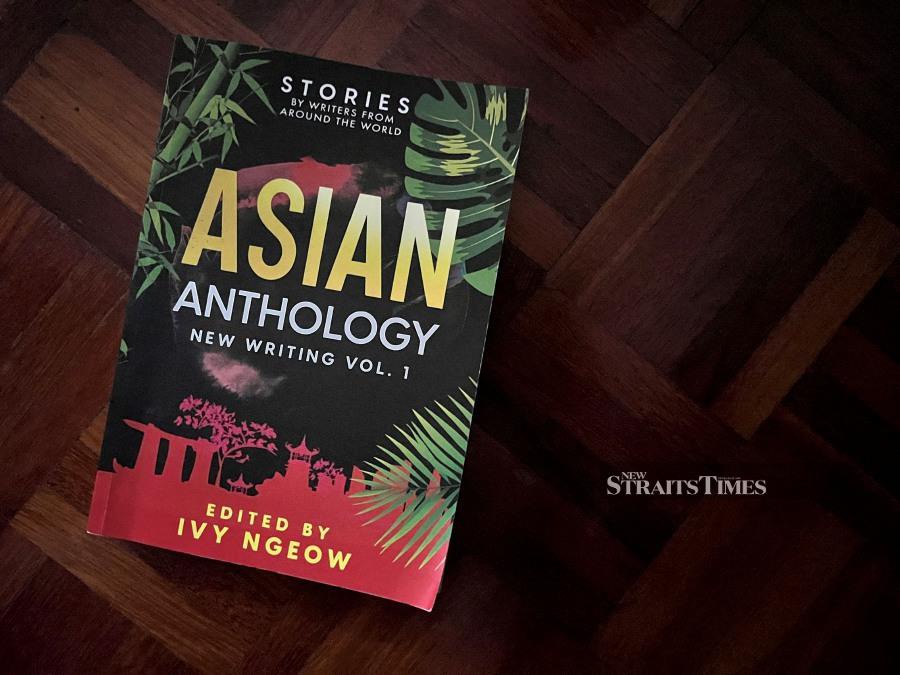I'M often puzzled by the definition of Asian stories. What makes a story truly "Asian"? That it's set in Asian countries? That its narrative often uses Asian tropes and terms? Is good storytelling the same thing in all cultures?
These were the questions that arose when I came across this little anthology of stories during a recent visit to the bookstore. Asian Anthology: New Writing Volume 1 is a showcase of short stories and place, writing by both new and established writers. Some unexpected, a few surreal and others traditional, these 23 compelling stories of irony, humanity and satire explore a range of subject matter to reveal a glimpse of modern society", reads the blurb.
Sounded very compelling, I thought. After all, we have plenty to draw upon from the plumbs of history, culture and tradition. But can we tell a good Asian story?
Storytellers who tell "Asian stories" can sometimes feel as though they're operating inside a gilded cage. While they remain within the confines and writing stories within the Asian context, stories can feel contrived, tired and often seen to pack in as much references to culture and history without giving much thought to the flow of the narrative.
This frustration is coupled with the fact that second and third-generation Asian authors who are sometimes fortunate to have a rich seam of inter-generational conflict, cultural confusion and religious tensions to mine for literary purposes, are unable to weave in these nuances into their tales.
It's these assumptions that Asian Anthology: New Writing Volume 1 seeks to dispel. And by damn, they've mostly succeeded. The anthology of 23 stories begins in thrilling fashion with an introduction by the editor, Ivy Ngeow, that's both impassioned and provocative. "Asia. Four letters, three billion people," she begins with great aplomb.
The anthology, writes Ngeow, is a unique first-of-its-kind project whose objective is to give new voices from all over the world a chance, as well as more established and prize-winning writers. "It has always been my dream to read more of the kind of books that I was raised with — international stories with great storytelling on multiple themes," she says in her introduction.
Apart from the requirement for the writing to be set in Asia, contributors to this book have come from Malaysia, Singapore, India, Myanmar, Hong Kong, Serbia, Austria, France, the United Kingdom and the United States SA. This, of course, makes for an eclectic, if not rich, reservoir of stories that are a joy to read.
TELL ME A STORY
The first story doesn't disappoint. Singaporean writer Yang Ming gives us a chance to delve into a tumultuous relationship between a mother and daughter in Spring Onions. What makes a good son or daughter? For the traditional Chinese family, the answer seems to be filial piety, the almost superhuman levels of devotion and sacrifice.
The tension and guilt that bubble up when the younger generation struggles between honouring their parents' wishes and wanting to make their own way in the world is expressed through the relationship between the mutinous Ning and her mother Suyin.
Ning wants to follow in her mother's footsteps to make buns while her mother believes that education would help break the cycle of poverty and struggle, and give her daughter a fighting chance to survive out there in the world.
The wickedly satirical Night of the Seventh Moon by Winston Lim delves into the supernatural world when a psychic club meets in a faded Penang beach resort during the Chinese month of the Hungry Ghost. From seances to exploring a cemetery in the dead of the night, these good members of the club soon stumble across a different kind of paranormal experience than they'd originally expected.
E.P. Chiew's Her Fluttering Womb and Doc Krinberg's A Sparkle of Fireflies are wonderfully nuanced. From a woman with an unexplained malady, to one who's courted by a cavalier stranger, these are stories that depict the struggles of Asian women who have been either voiceless or have been sexualised, or even both; and the emancipation that comes when they realise that only they can be the change that they long for.
One of my favourite stories has to be the disturbing Banu written by Marc De Foite. Seen through the eyes of a young village girl, the central focus of greed, corruption and ecological destruction culminates in a horrifying climax. Banu hits very close to home with deforestation, indiscriminate logging, greedy religious leaders and the hapless villagers caught in between.
Ngeow's tale of the Dog Walker is another favourite, with an interesting premise of how a dog can change someone's life completely. A man loses his job but finds love in the shape of a gigantic dog. David's adventure with Keane, a rottweiler mixed breed, is at once both heartwarming and terrifying.
There are flashes of promise everywhere else like Krishnaveni Panikker's The Brooches, a story of devotion and betrayal, revolving around the beautiful brooches of a dead Datin; meanwhile, Yvonne Lyon's Day of Silence centres around a strange Balinese tradition called Nyepi and a couple whose lives are changed by that unforgettable day.
For the Balinese, Nyepi is a Hindu celebration that marks the start of a New Year; a day to cleanse the island from the previous year's misdoings and bad omens, establishing a pure and positive year ahead. The whole island shuts down for a full 24 hours and the streets are off limits to everyone. Even the airport closes for a full day, with planes being rerouted above so as not to disturb the silence below.
The collection of short stories by authors Rumaizah Abu Bakar, Patrick Burns, Cheung Louie, EP Chiew, Mason Croft, MK Eidson, Marc de Faoite, Jenny Hor, Nenad Jovancic, Lynett Khoh, Doc Krinberg, VS Lai, Ewan Lawrie, Winston Lim, YK Lim, Yvonne Lyon, Sandeep Kumar Mishra, Ivy Ngeow. Krishnaveni Panikker, Sylvia Petter, Shafiqah Alliah Razman, San Lin Tun and Yang Ming do not disappoint.
As a reader, all I can do is hope that more writers like these will keep telling their stories — books that span genres, and time periods and countries — to keep showing the readers who are willing to step into them the breadth of the Asian experience, and that that experience isn't to be stereotyped or pigeonholed in any way.
So, is there such a thing as a great Asian story? Get the book and find out!
ASIAN ANTHOLOGY: New Writing Vol 1
Edited by: Ivy Ngeow
Publisher: Leopard Print
246 pages
Get top selling story books and novels at bargain prices with Shopee Promo Code.





